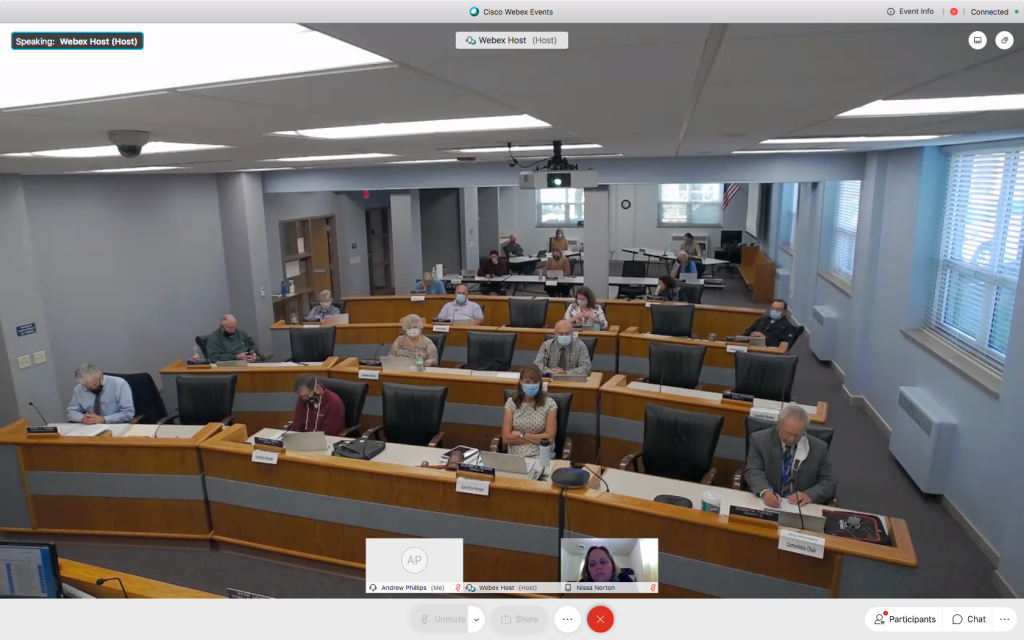
The growth in the number of COVID-19 cases in Door County is now “exponential,” reflecting a statewide trend and including a high level of community spread, county officials told the Door County Board of Supervisors Tuesday.
In reports to the board, county Emergency Management director Daniel Kane and Public Health officer Susan Powers said hospitalization rates remain low, though the statewide hospitalization rate is increasing. But the county’s health institutions now are struggling to keep up with COVID-19 contact tracing and testing, Powers said.
“If one case creates three cases, and then those cases each create three, you can understand how quickly it can spread,” Powers said. “… It’s taken off.”
The number of active cases in the county jumped Tuesday from 67 to 92, the largest single-day increase on record and an increase from eight active cases on Sept. 1. The seven-day average in newly confirmed cases statewide was 1,838 as of Tuesday, a jump from 727 on Sept. 1. The seven-day average in the percent of people tested statewide who tested positive was 14.9 percent as of Monday, up from 8.6 percent on Sept. 1.
Surge in cases puts stress on contact tracing, testing capacity
County Public Health staff have seen a significant increase this month in the number of cases they deal with on a daily basis for contact tracing, Powers said.
In July and August, she said, they saw about one to four cases daily. Now, Powers said, that number usually is about five to 12, and on Tuesday it was 16.
Public Health staff have tried to follow up within 24 hours with people who have tested positive, and within 48 hours with anyone who came into close contact with those people while they were contagious, Powers said. As of last week, she said, they no longer are able to meet those benchmarks due to the increase in cases.
This week, Public Health staff began to refer some cases to a state contact tracing team of about 200 people, Powers said. That team has also been backlogged, though, including a backlog of 2,700 cases on Friday, she said.
Medical facilities in the county also have not been able to keep up with testing in the past week or so, Powers said. Door County Medical Center does most of the testing in the county, she said, but Aurora Health Care also tests people who have symptoms at its urgent care location in Sturgeon Bay.
The Emergency Management department is working with Public Health and medical facilities to determine if another mass testing event is needed, Kane said. At the last mass testing event, on Aug. 27, about 550 tests were completed, with three or four positive results, he said.
The Emergency Management and Public Health staff also are working to put together a drive-through flu vaccine clinic, Kane said, and they would apply any lessons learned from that event to the future distribution of a COVID-19 vaccine.
Powers expects spread to continue into fall
Powers said she expects the spread of COVID-19 in the county to continue into the fall. Among the reasons for that, she said, are the continuation of private gatherings that have contributed to many cases; cooler weather forcing more people inside, where the virus is more likely to spread; and the fall tourism season.
Powers and county supervisors also discussed the emotional toll that the pandemic has taken on the community.
Being asked to quarantine for 14 days after coming into close contact with someone who tested positive is difficult for anyone, Powers said, and it places a huge strain on working families when school children need to quarantine.
On the whole, Powers said, she and Public Health staff are observing that the community is fatigued and frustrated.
Some of that frustration has been directed at Public Health staff, she said.
“One of my staff said yesterday, ‘Because COVID is invisible, people are yelling at us,’” Powers said.
Some people who have tested positive have refused to quarantine or identify people with whom they had close contact, Powers said, hindering contact tracing efforts.
A close contact is defined as someone who was within six feet of a person who tested positive—while they were contagious—for at least 15 minutes cumulatively in a 24-hour period, Powers said. That’s true regardless of whether either person was wearing a mask or whether there was a plexiglass barrier between them, she said.
People who are in the same household as a person who tested positive or who stayed overnight in the same household while the person was contagious, or who had close physical contact such as a hug with a contagious person, also are considered close contacts, Powers said.
Public Health staff have leaned on schools and businesses to help determine who qualifies as close contacts in those settings, Powers said.
County-wide mask mandate up in air after statewide order extended
After Gov. Tony Evers on Tuesday issued a new emergency order and effectively extended the statewide mask mandate until Nov. 21, county leaders said they’re grateful for the governor’s action and will wait to see both how it plays out, and how case numbers change, before taking further action.
County administrator Ken Pabich said he wants to see if there will be additional legal challenges to the statewide mandate.
Susan Kohout, the County Board vice-chair, said she doesn’t think county supervisors would support having a county-wide mask mandate ordinance ready to vote on before the statewide order expires, because circumstances could change before then.
Discussions about the issue will continue at the Oct. 12 meeting of the County Board’s health and human services committee, said Megan Lundahl, the committee chair. Lundahl said she plans to invite county corporation counsel Grant Thomas to that meeting to be a part of those discussions.
